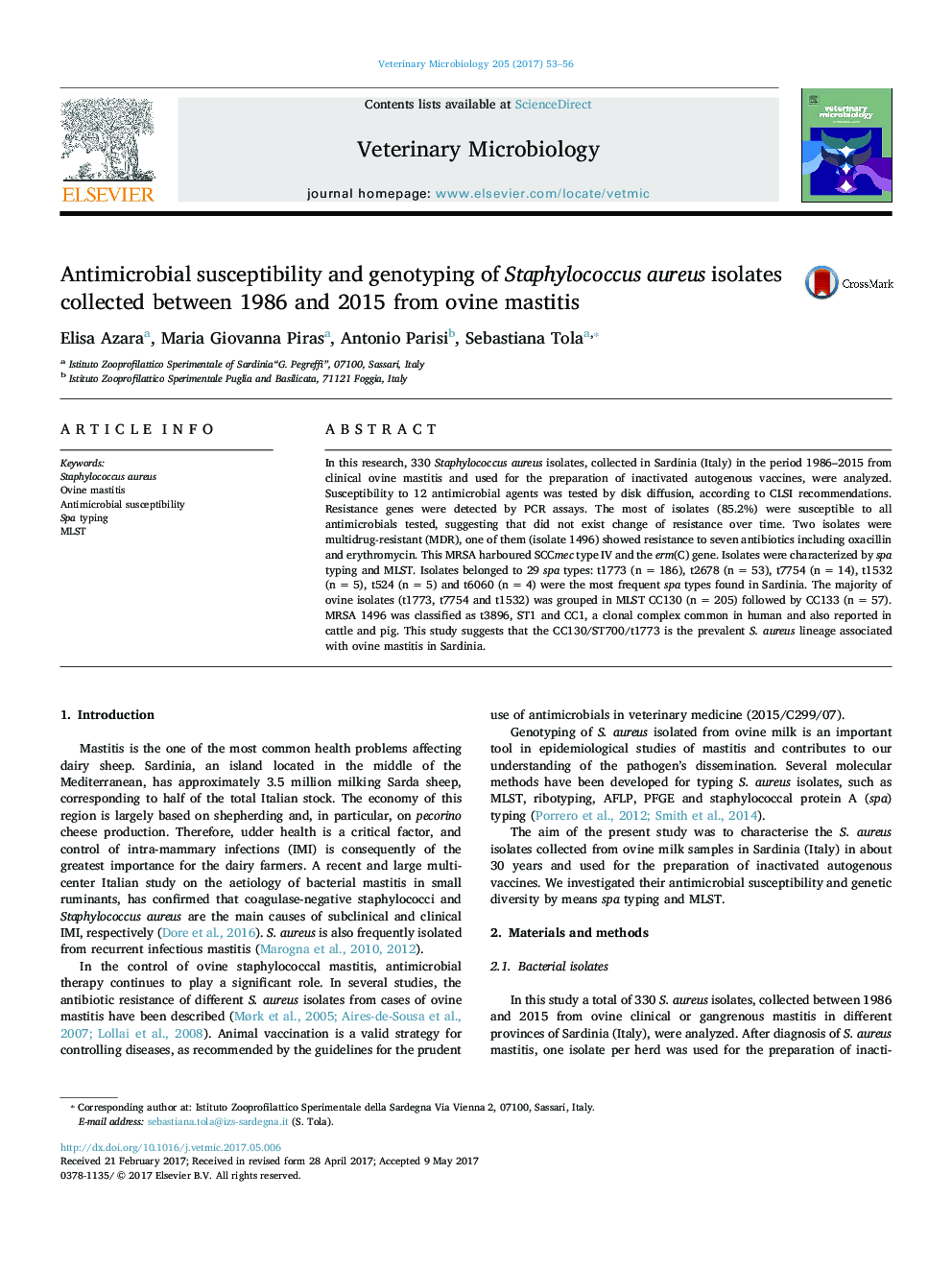| Article ID | Journal | Published Year | Pages | File Type |
|---|---|---|---|---|
| 5545399 | Veterinary Microbiology | 2017 | 4 Pages |
â¢in Sardinia (Italy) The prevalent S. aureus lineage associated with ovine mastitis was CC130/ST700/t1773.â¢In total, 85.2% of S. aureus isolates were susceptible to all antimicrobials tested.â¢The MRSA isolate 1496 was associated with human origin.
In this research, 330 Staphylococcus aureus isolates, collected in Sardinia (Italy) in the period 1986-2015 from clinical ovine mastitis and used for the preparation of inactivated autogenous vaccines, were analyzed. Susceptibility to 12 antimicrobial agents was tested by disk diffusion, according to CLSI recommendations. Resistance genes were detected by PCR assays. The most of isolates (85.2%) were susceptible to all antimicrobials tested, suggesting that did not exist change of resistance over time. Two isolates were multidrug-resistant (MDR), one of them (isolate 1496) showed resistance to seven antibiotics including oxacillin and erythromycin. This MRSA harboured SCCmec type IV and the erm(C) gene. Isolates were characterized by spa typing and MLST. Isolates belonged to 29 spa types: t1773 (n = 186), t2678 (n = 53), t7754 (n = 14), t1532 (n = 5), t524 (n = 5) and t6060 (n = 4) were the most frequent spa types found in Sardinia. The majority of ovine isolates (t1773, t7754 and t1532) was grouped in MLST CC130 (n = 205) followed by CC133 (n = 57). MRSA 1496 was classified as t3896, ST1 and CC1, a clonal complex common in human and also reported in cattle and pig. This study suggests that the CC130/ST700/t1773 is the prevalent S. aureus lineage associated with ovine mastitis in Sardinia.
